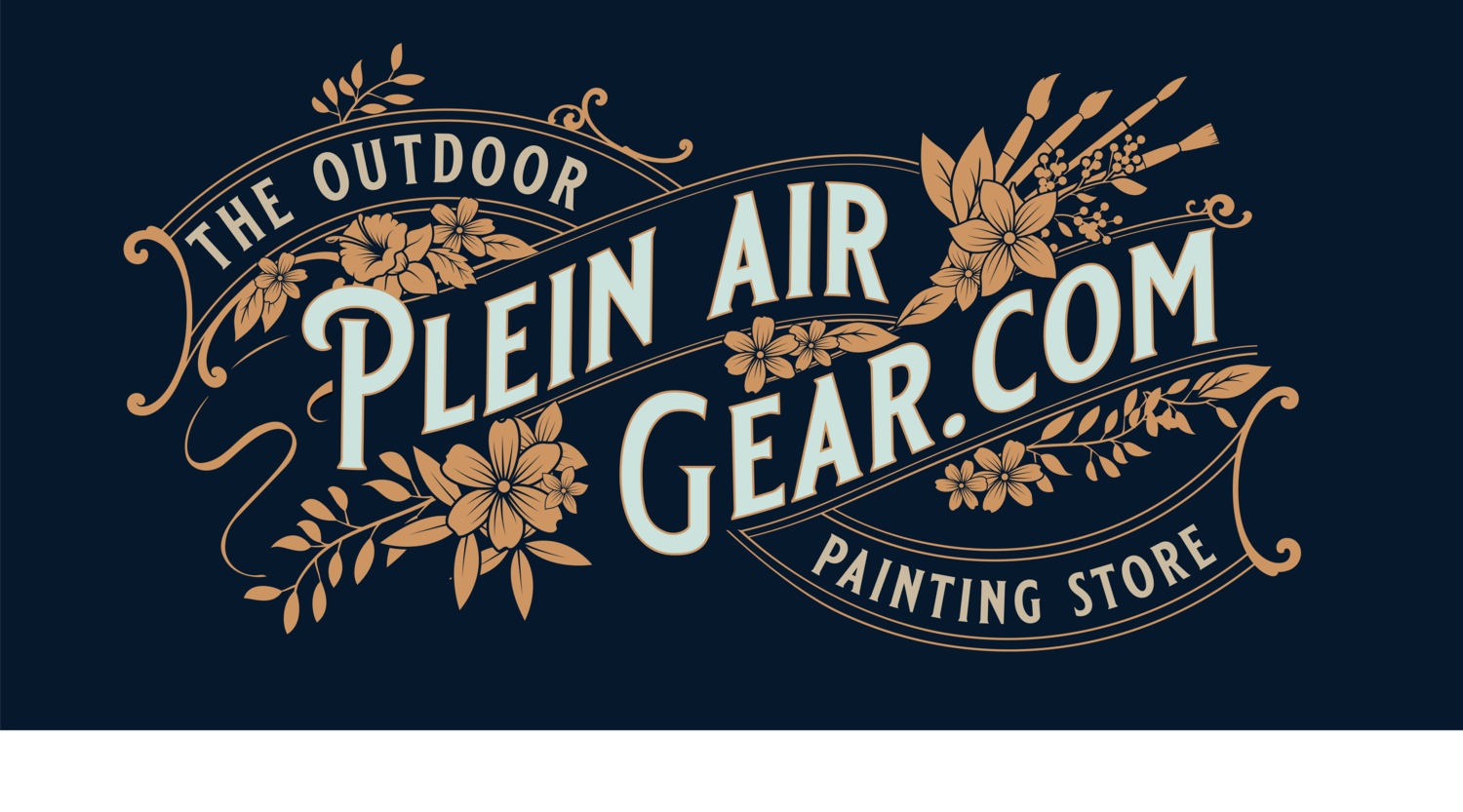Talking Tripods: Your three-legged friend
Unless you are using a version of the Monet-style field box with built-in legs, a tripod will almost certainly be an essential piece of your plein air painting equipment. Photographers’ tripods are generally lighter and fold away smaller than the tubular metal or wooden sketching easels found in art shops and several pochade boxes and mast-easels are made to attach to them just like a camera. Fit a ‘quick-release’ plate to your box or drawing-board and you will be ready to set up or pack away very quickly. If you are just starting out or planning to upgrade, here are a few basic questions to consider and thoughts on what to look for:
Artists and tripods come in all sizes! - so ensure the tripod matches the height of the person using it. Ideally, when your easel or pochade is attached, the centre of the painting surface should be at eye level. I have one which is designed so the legs fold up over the ball head, reducing the length when folded to just 40 cms. It is handy for fitting into luggage but on arrival at a painting trip, to save time, I don’t invert legs and it still fits into my backpack.
Weight of Opinion…Tripods are rated for the weight of camera they are designed to support. If your pochade box is bulky or your drawing board is likely to catch a gust of wind, consider purchasing a sturdier tripod rated for at least 4kgs. Travelling by car, the weight may not matter but if you will be hiking or flying, it may be worth investing in the extra cost of a carbon-fibre tripod instead of an aluminium alloy one.
Twist or Flip?…A ball-head is the smallest and lightest swivel head to attach your pochade box to. However, if your fingers don’t respond if you sometimes work in cold conditions, there are other kinds available such as the pan and tilt head and the pistol-grip head that can be easier to adjust. Tripod legs can be either twist-lock or flip-lock and which you choose is largely a matter of preference. I like flip-locks because they are either open or closed, while twist lock legs can disconcertingly start to sink if not tightened properly. Nonetheless, there is a greater range of tripods with twist-lock legs to choose from.
Bulk Up…Any choice of easel is a trade-off between bulk for stability and lightness for portability. However, you can get the best of both if you remember to stabilise your tripod by hanging a bag of ballast from the centre column before you begin. This ballast can be your knapsack with the rest of your supplies or a tote bag with some sand or stones in it, suspended above the ground from the centre-point of your tripod. Most tripods have a hook or a carabiner at the base of the centre column for this and if yours doesn’t (like my Manfrotto tripod), it is not difficult to attach one.
A Happy Release…As with all art materials, the advice ‘to buy the best you can afford’ applies here but there are many tripods to choose from that won’t break the bank and will do a perfectly good job. Quick release plates aren’t all the same, so it is a good idea to buy more than one with your tripod and leave one permanently attached to your paintbox or drawing board. But do make sure the head and any quick-release which comes with it is made of metal, not hard plastic, which is not sufficiently rigid. This is the pivot point for your box and panel, your brushes and solvent etc. and if the tripod head and release plate are not solidly connected, no amount of ballast will stop the wobble!
